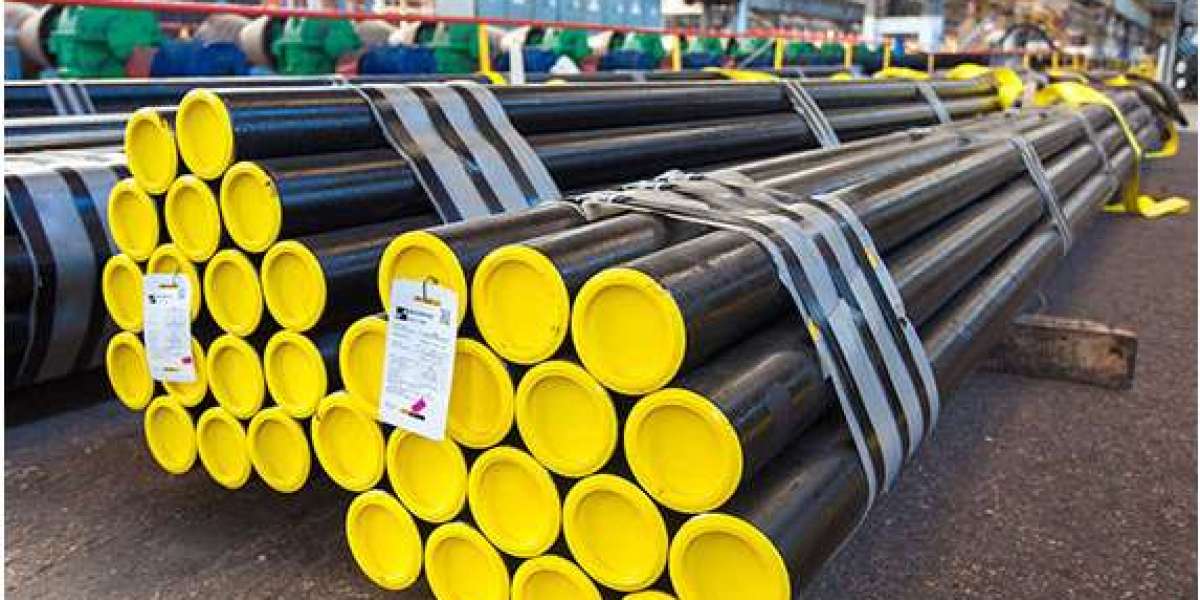Suppose you are in the heart of a steel manufacturing facility. You will witness manufacturers transforming raw materials into the seamless pipes and tubes that form the backbone of various industries.
Here, two distinct techniques take center stage: hot extrusion and cold drawing. Manufacturers produce hot-rolled pipes and cold-drawn seamless tubes using these two techniques. Each method possesses its own set of advantages. Hence, manufacturers choose them based on the specific requirements of the final product. We will uncover the key differences between these two processes and where each technique excels.
Hot extrusion and cold drawing:
You are about to embark on a journey through two rudimentary processes in metalworking. Let us start with the basics.
Hot extrusion:
- Engineers heat a massive piece of metal to a temperature where it becomes malleable but not molten. Then, they force this piece of metal, typically a cylindrical billet, through several dies to create a tube or pipe.
- Hot extrusion has the ability to produce large-diameter seamless tubes and pipes. It is like molding soft clay into a desired shape.
Cold drawing:
- Now, let us shift our focus to a cold drawing facility. Here, manufacturers pull a seamless tube or pipe through a series of dies, each with a slightly smaller diameter. This process elongates and refines the tube's dimensions.
- Cold drawing offers better precision and has the ability to create tubes with exacting tolerances. Think of it as meticulously sculpting a work of art.
Temperature differences:
The most apparent difference lies in their names: hot extrusion involves heat, while cold drawing is, well, cold.
- In hot extrusion, pipe fabricators heat the metal to a temperature that allows easy deformation. Such high temperature keeps the metal in a pliable state, making it suitable for shaping and forming.
- On the flip side, seamless tube manufacturers perform cold drawing at room temperature. The absence of heat means the metal retains its inherent strength and structural integrity. It is where precision and tight tolerances come into play.
Diameter and wall thickness:
Size is a crucial factor in choosing between these techniques. When it comes to choosing pipes and tubes, size does matter. You do not want to choose a tube with a smaller diameter for a machine. The smaller diameter tube will not only be unfit for use but also can cause catastrophe if you use it forcefully.
- Hot extrusion excels at producing large-diameter seamless tubes. It is the go-to method for crafting those hefty components you notice in heavy industries like oil and gas, petrochemicals, automobiles, etc.
- Cold drawing, on the other hand, is the champion of precision when producing seamless tubes and pipes. It is the technique you turn to when you need tubes with narrow tolerances, especially for applications where consistency is key, such as the aerospace industry.
Strength and microstructure of material properties:
The temperature at which manufacturers perform each process influences the material's properties.
- Hot extrusion, due to the elevated temperature, may alter the microstructures within the material. It can lead to reduced hardness and improved ductility.
- Cold drawing maintains the material's original microstructure, preserving its strength and hardness. Hence, most engineers prefer this technique when maintaining the material's structural integrity is paramount.
Surface finish and final quality:
Consider the surface of the tubes and pipes seamless tube manufacturers produce using each method.
- Hot extrusion may result in a rougher surface finish due to the higher temperatures involved. It is acceptable in applications where aesthetics take a back seat to functionality.
- Cold drawing, on the other hand, produces a smoother and more refined surface finish. Cold-drawn tubes are ideal for applications where appearance matters. You can use cold-drawn tubes in decorative fixtures or architectural elements.
Manufacturing efficiency and cost:
As you navigate the differences between hot extrusion and cold drawing, you must consider factors like manufacturing efficiency and cost considerations.
- Pipe fabricators generally consider hot extrusion to be more efficient for producing large quantities of tubes quickly. The process makes it cost-effective for industries like oil and gas, where volume is essential.
- Cold-drawn seamless tubes, conversely, are more meticulous and precise. However, cold drawing tends to be a slower process. It is cost-effective for applications that require smaller quantities or where precision is of utmost importance, such as aerospace or medical devices.
Conclusion:
As you comprehend, hot extrusion and cold drawing are like two distinct paths through a vast and intricate landscape. Each technique has its strengths, making them suitable for different applications. Hot extrusion is the brute force that molds colossal pipes for heavy industries. On the other hand, cold drawing is the delicate touch that sculpts precise, high-precision tubes.
Now that you have this knowledge, you can appreciate the meticulous craftsmanship that goes into the products you encounter in various industries. Whether it is the robust pipes of an oil rig or the intricate tubing of a medical device, you know their origin. The differences between hot-rolled and cold-drawn seamless tubes are crucial in the final quality and performance of the end product.



